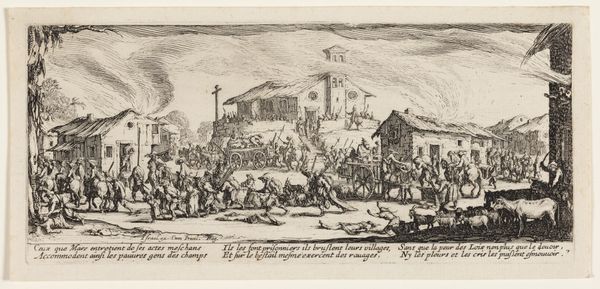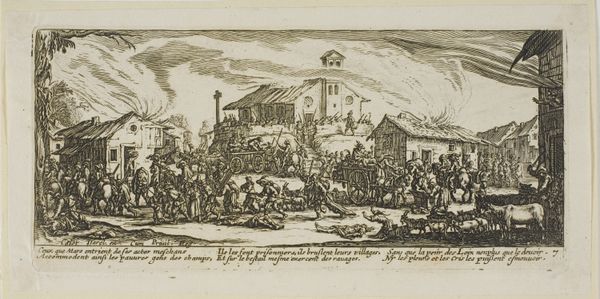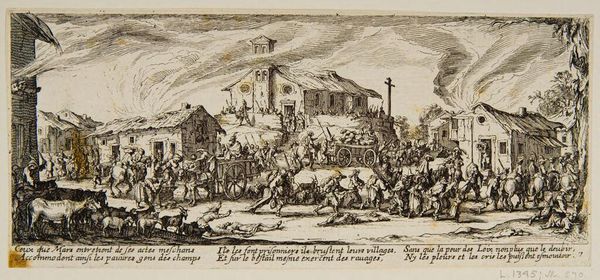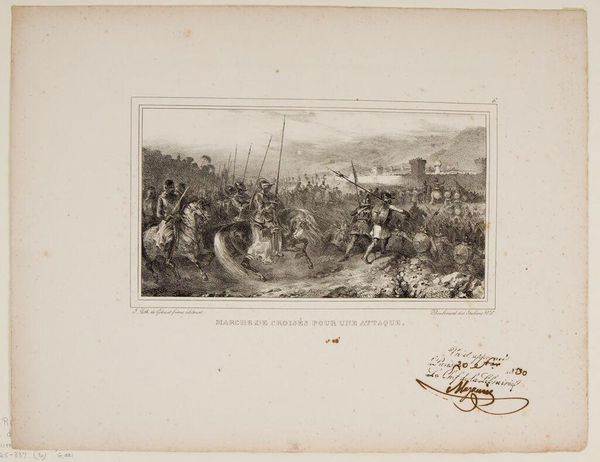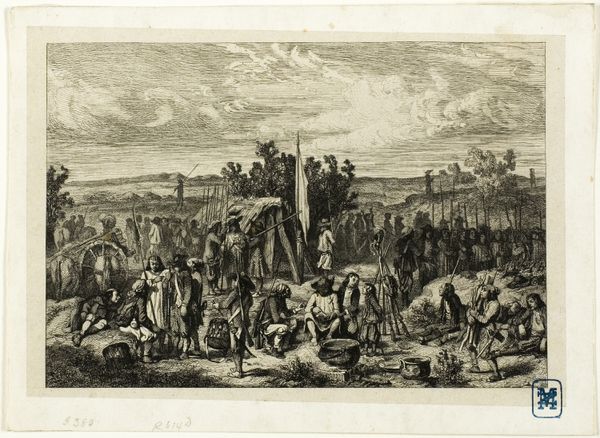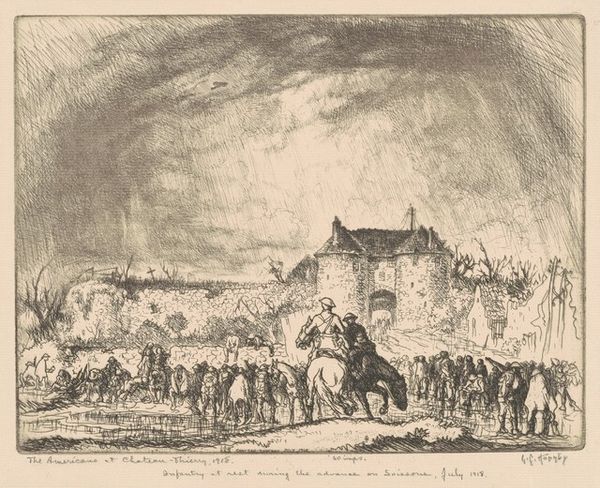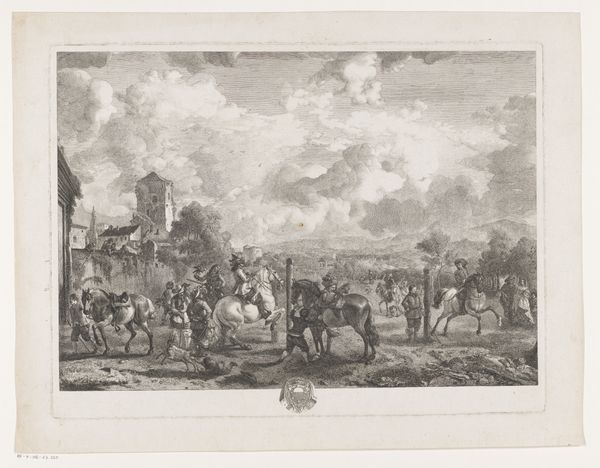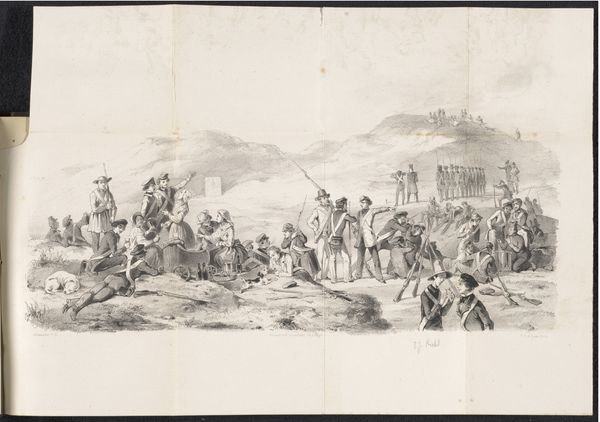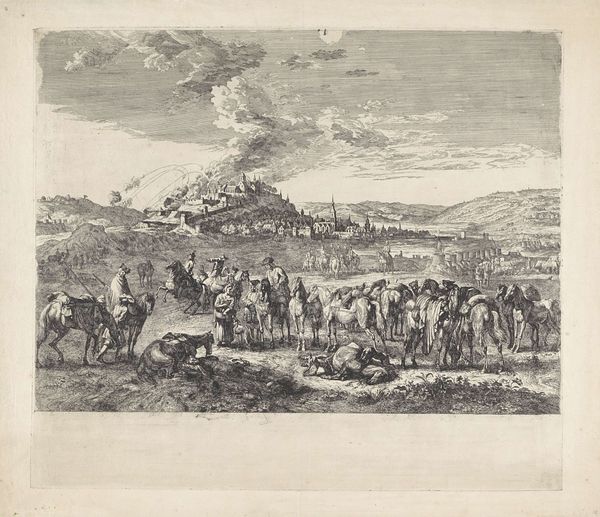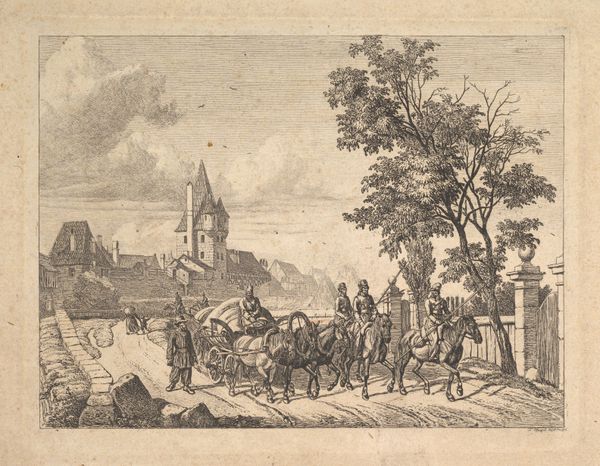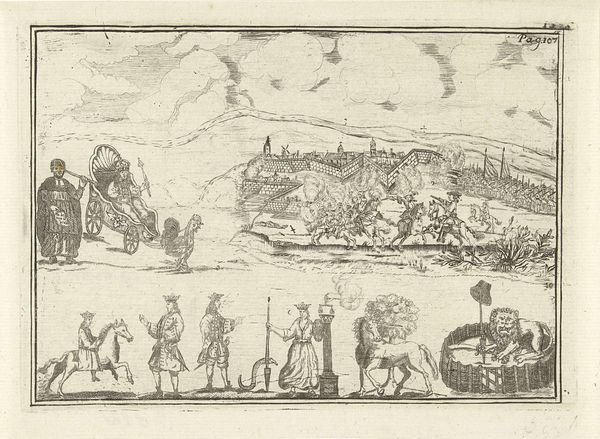
Dimensions: Image: 7.5 Ã 18.5 cm (2 15/16 Ã 7 5/16 in.) Sheet: 8.6 Ã 19 cm (3 3/8 Ã 7 1/2 in.)
Copyright: CC0 1.0
Curator: This is "Pillaging the Countryside" by Jacques Callot. Editor: My first impression is chaos. The scene is overwhelming, filled with figures and details, like a nightmare rendered in miniature. Curator: Callot made this etching, a relatively small print, during a period of intense religious and political conflict in Europe. Consider how the etching process itself, with its sharp lines and detailed textures, allows for a precise depiction of violence and social disruption. Editor: The burning buildings, the overturned carts, the bodies strewn on the ground. The figures are almost like ants, but their actions are brutal, evoking a sense of societal breakdown. There’s a deep sense of anxiety embedded in these symbols. Curator: Exactly. Callot's skill in etching allowed him to reproduce and disseminate these images widely, potentially influencing public opinion about the war. Think about the consumption of these prints—how did they function as documents or propaganda? Editor: It's striking how he uses those symbols of destruction—fire, fallen bodies, upended carts—to convey a broader sense of moral collapse. It makes you wonder, what endures amidst such devastation? Curator: Considering the socio-political context and the meticulous craftsmanship really elevates our understanding. Editor: Indeed, and it's the enduring emotional impact of those violent images that keeps us returning to it.
Comments
No comments
Be the first to comment and join the conversation on the ultimate creative platform.
